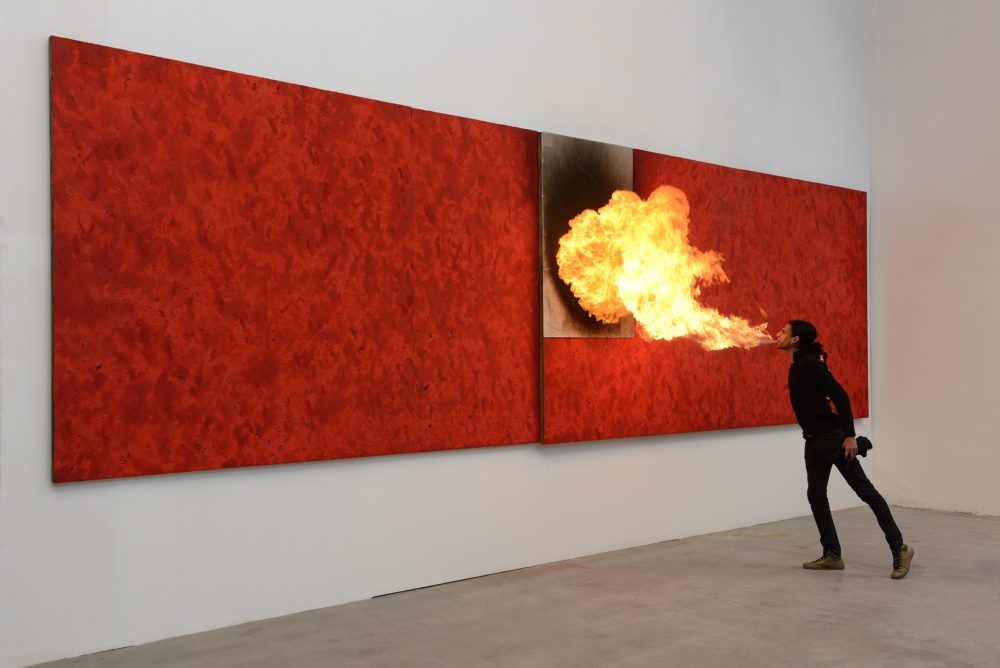Forty years after the last exhibition in a public space in Naples (Villa Pignatelli, 1977), the Fondazione Donnaregina per le arti contemporanee presents Painting as a Butterfly, the first major retrospective dedicated exclusively to the pictorial and drawing production of Pier Paolo Calzolari (Bologna, 1943), one of the most important contemporary Italian artists, exponent since the Sixties of the researches related to Arte Povera.
The exhibition at the Madre museum, organized in close collaboration with the Fondazione Calzolari and curated by Achille Bonito Oliva and Andrea Viliani, starts on the third floor and continues on the second floor in the four Facade Galleries (also entering into dialogue with the facing frescoed room by Francesco Clemente) and on the ground floor in the Re_PUBBLICA Madre Gallery. It includes over 70 paintings, drawings and multimaterial works created from the mid-Sixties to the present, documenting all the main cycles and phases of the artist’s research.
The practice of painting for Calzolari – as he declared to Bonito Oliva in the original interview for the catalogue of the exhibition – is a “listening instrument”, a state of “suspension” capable of leading to the synthesis the multiple articulations of his artistic research, which is at the same time minimalist and sensual, conceptual and Baroque. Calzolari spent his youth in Venice, where he was influenced by luminist effects and by the reflection of the light on architectural surfaces, a distinctive element of Venetian painting. These observations lead him to adopt in his works a material such as ice, chosen to give direct representation of the perfect white that can exist only in nature and destined to characterize its subsequent production, as well as other materials, elementary and often organic, such as fire, salt, lead, tobacco leaves, moss, burnt wood, walnuts, animal shells, along with neon and felt.
Continuing to explore his interest in light, matter and space-time through sculpture, installation and performance – as in the happenings organized since 1966, in which he pushes the spectators to become interpreters of what he calls “space activation” – starting from the Sixties, Calzolari realized paintings and drawings which, although less known, represent a characteristic and a fundamental component of his artistic practice. Works that delineate a reflection on the relationships between color, form, object and environment, also in the reference to the experimentations of the 20th century Valori Plastici, that have structured his artistic research, but that have also had a profound influence both in the definition of the Italian art of the last fifty years and towards the next generations. In his paintings and drawings Calzolari has in fact retraced and freely compared apparently antithetical elements and concepts such as natural materials and pictorial representation, abstraction and figuration, visual and performative dimension, space-time of the work and of the environment in which it is inserted, reshaping it.

Pier Paolo Calzolari, Mangiafuoco, 1979. Collezione privata. Foto © Michele Alberto Sereni.
Exhibition
Pier Paolo Calzolari
Painting as a Butterfly
08.06 — 30.09.2019
Curated by Achille Bonito Oliva, Andrea Viliani
Opening 07.06.2019
7.00-10.00 pm